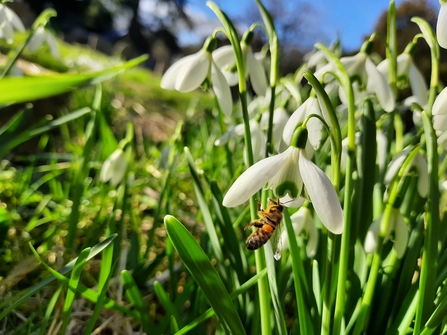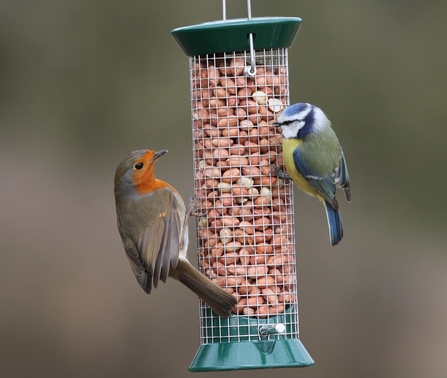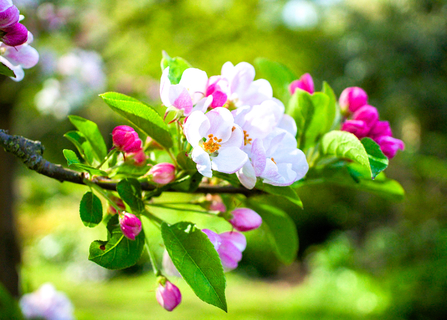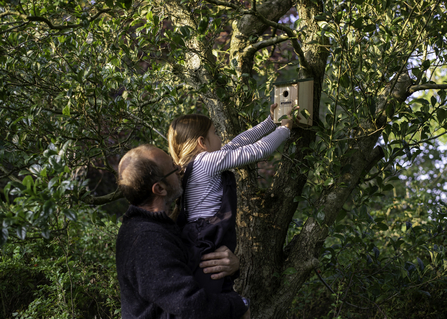
A bee visiting a snowdrop in an Oxfordshire churchyard. Picture: Pete Hughes
Protect wildlife for generations to come
A few well-chosen plants transform Ed's front garden

A bee visiting a snowdrop in an Oxfordshire churchyard. Picture: Pete Hughes
Winter gardens can still be filled with perfumes of flowering plants that delight gardeners as well as visiting wildlife. When bumblebees emerge on sunny days they need to refuel quickly with nectar. These shrubs are perfect pit-stops: mahonia, pieris, honeysuckle, Japanese quince, and daphne.
The flowers of winter bulbs such as snowdrops and crocuses also give much-needed nectar for bees and other insects that fly on sunny winter days. If you don't have any bulbs in your garden now, why not add a reminder to your calendar to plant some this autumn ready for next year.

Robin and blue tit © Nicholas Watts
In very cold weather all birds need to feed on high protein and fat to keep up their energy levels and survive the freezing nights! Put out bird food that has mealworms, seeds and fat in it, and fresh water every day for birds to drink as well as fluff up their feathers to keep warm.
BBOWT supporters can get 10% off your first order from Vine House Farm using the code BBWF234 at the checkout.
How to feed birds in your garden
Do not feed cooking fat as it is too high in salt. Feeder hygiene is very important, these should be cleaned regularly with a mild disinfectant solution, and air dried to prevent the spread of diseases such as Trichomonas; water should be changed daily.

Crab apple blossom. Picture: Ian Kirk/ Wikimedia Commons
It’s the perfect time to plant trees that will give you pretty blossoms and tasty fruit, nuts and berries. Hawthorn, crab apple, hazel and field maple are small, native trees suitable for gardens.
Bare-rooted fruit trees such as pear, apple, plum and cherry are perfect to plant as soon as soil is frost-free.

Putting up a bird box by Evie and Tom Photography.
If you have space in your garden, put up different styles of nest boxes to attract different bird species; multiple styles can be hung without the fear of competition.
Now is the time as most birds will already have started looking for potential nesting sites and use them as roosting spots at night. Blue tits will squeeze through a tiny hole just 25mm wide, while starlings and sparrows prefer boxes with a 32mm hole.
Boxes should be placed on a north or west facing prospect, sheltered from the prevailing sun, and away from possible predator perching spots.
Robin, blackbird, and wren open boxes should always be placed tucked away in shrubs and bushes, away from predators’ eyes. Special ‘guardian’ tubes are available to purchase, which can be fitted by the entrance hole for added protection.